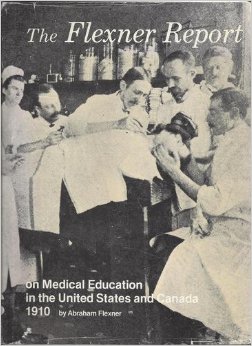Functional Medicine Versus Mainstream Doctoring — Part One

You can’t really begin to understand the differences between functional medicine and mainstream doctoring without briefly delving into the history of Western medicine. And key to that short history lesson is an American oil magnate who was hell-bent on furthering the expansion of the family fortune.
But before we get into all that, ask yourself this: Why have natural healing methods never gained much prominence in this country? These non-allopathic healing modalities — which include naturopathy, homeopathy, eclectic medicine (botanical and herbal medicine), holistic medicine and others, just never took off.
Some say one man with deep pockets and a desire to continue expanding his financial empire by cornering the market on the pharmaceutical sector is to blame. That man, of course, was John D. Rockefeller.
The story goes that in 1910, Rockefeller — a business magnate and philanthropist who co-founded the Standard Oil Company — funded the Flexner Report, a book-length study of medical education in the United States and Canada.
The Flexner Report called on medical schools in the U.S. to tighten their admissions and graduation standards, and to adhere strictly to the protocols of mainstream science in their teaching and research. As a result, many medical schools fell short of the standards advocated within the Flexner Report, and nearly half of such schools either merged or were closed outright.
 Although almost all the alternative medical schools listed in the Flexner Report were closed, the American Osteopathic Association was able to bring a number of it’s osteopathic medical schools into compliance. As a result, the curricula of DO- and MD-awarding medical schools are now nearly identical, the chief difference being the additional instruction in osteopathic schools of osteopathic manipulative medicine.
Although almost all the alternative medical schools listed in the Flexner Report were closed, the American Osteopathic Association was able to bring a number of it’s osteopathic medical schools into compliance. As a result, the curricula of DO- and MD-awarding medical schools are now nearly identical, the chief difference being the additional instruction in osteopathic schools of osteopathic manipulative medicine.
According to numerous sources — including ToolsForFreedom.com — the release of the Rockefeller-funded Flexner Report prompted the American Medical Association (AMA) to endorse only those medical schools with a drug-based curriculum. As a result, it didn’t take long for non-allopathic schools to fall by the wayside due to a lack of funding.
Around the same time, Rockefeller’s Standard Oil Trust was dissolved under court order, which amid controversy resulted in the creation of a number of smaller oil companies. That prompted Rockefeller — in an attempt to improve the family image — to create The Rockefeller Foundation. That foundation made a number of donations to medical schools, all of which were in compliance with the recommendations put forth by the Rockefeller-endorsed Flexner Report.
Some, including the Dr. Rath Foundation, believe that the Rockefeller-supported medical schools had become “missionaries of a new breed of companies: the manufacturers of patented, synthetic drugs.”
Interestingly enough, after the forced breakup of Standard Oil, Rockefeller took a strong position in pharmaceutical sector, aligning with I.G. Farben — a German chemistry conglomerate that at one point was considered the largest chemical company in the world. Years later, in 1941, an investigation exposed a “marriage” cartel between Rockefeller’s Standard Oil and I.G. Farben.
According to The Thistle, an MIT newspaper that deals with contemporary social and political issues, I.G. Farben produced vaccines and drugs that included Salvarsan, aspirin, Atabrine, and Novocain, along with sulfa drugs, as well as poison gases and rocket fuel used by the Nazi’s in World War II.
With that as our backdrop, we’re now happy to tell you about the differences between functional medicine and the traditional doctoring advocated by today’s mainstream medical schools and colleges.
But you’ll have to wait until next week’s installment, Functional Medicine Versus Traditional Doctoring — Part Two.

